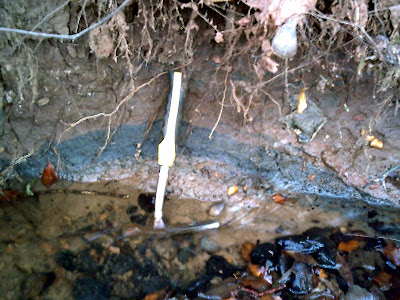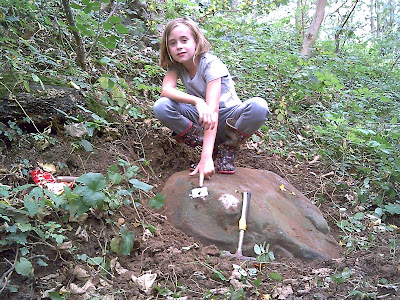Every whinstone boulder i checked attracted a magnet, this stretch of Marton west beck has a very large amount of whinstone of all sizes, all seem to be water worn, and all the Andesite (whinstone) i tested was magnetic.
 I presume these magnetic Andesite boulders were originally part of the dyke in the Stainton area and were broken away by the last ice advance.
I presume these magnetic Andesite boulders were originally part of the dyke in the Stainton area and were broken away by the last ice advance.Ime not sure what rock this is yet, but it came from the same gravel layer as the magnetic Andesite (whinstone)
 This stretch of Marton west beck has by far the largest deposits of Andesite dyke stone i have found anywhere in the south Cleveland area, the gravel layers in the beck banks are full of it, and all tested were magnetic.
This stretch of Marton west beck has by far the largest deposits of Andesite dyke stone i have found anywhere in the south Cleveland area, the gravel layers in the beck banks are full of it, and all tested were magnetic.
These images show what i believe is the same red clay ive found underlying everything in the south west Middlesbrough area, with the gravel layer above.

The image below hopefully shows the amount of material above these layers, i would say at least a 35 metres

 These images show the blue clay seem that ive also found in the red clay layer at Stainton, Maltby, and, Ormesby becks.
These images show the blue clay seem that ive also found in the red clay layer at Stainton, Maltby, and, Ormesby becks. Red clay layer with gravel layer above, again the same as seen at Stainton, Maltby, and ormesby becks.
Red clay layer with gravel layer above, again the same as seen at Stainton, Maltby, and ormesby becks.









































